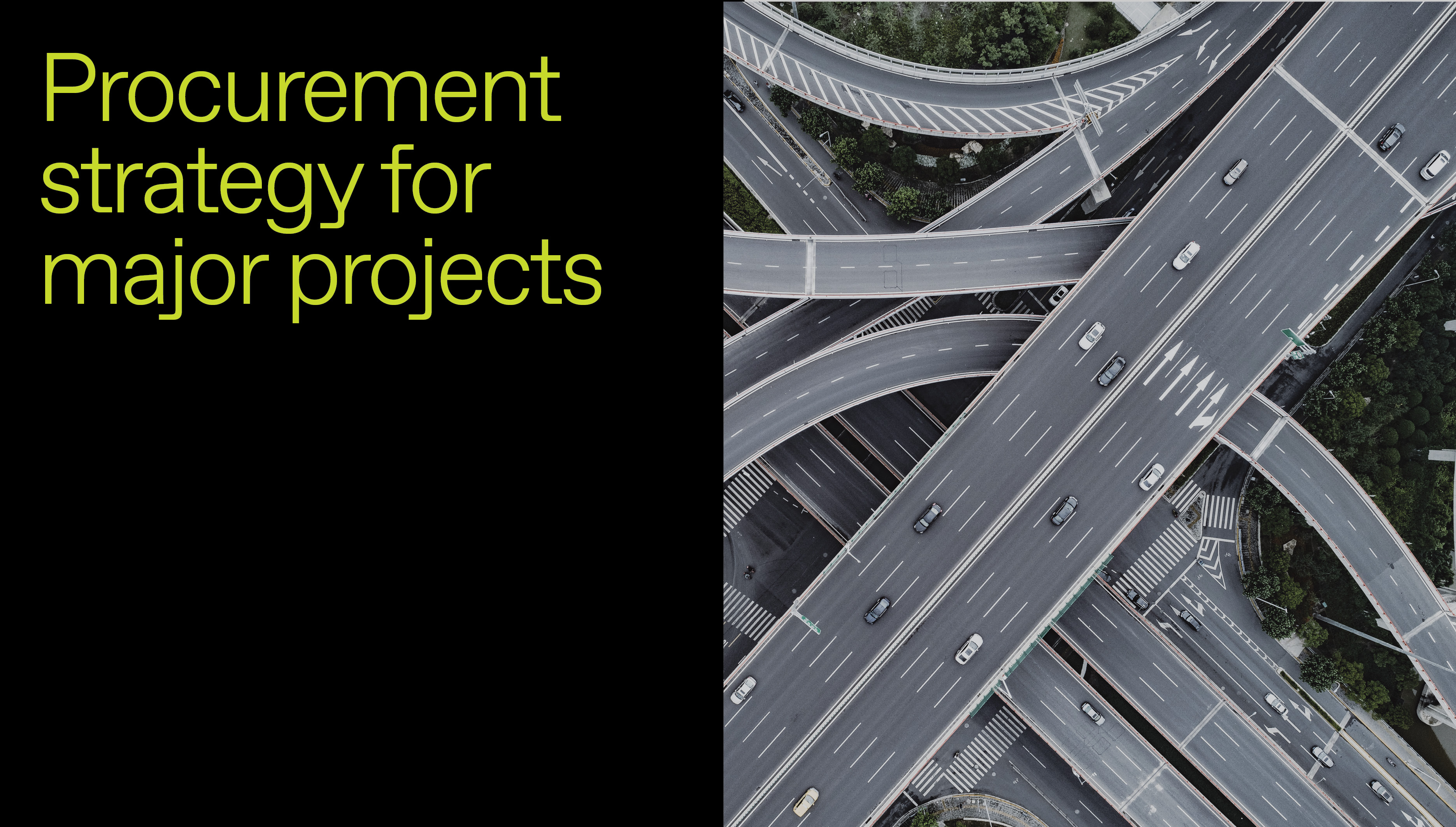Streamlining railway procurement in UK markets
From rolling stock to land acquisition, regulatory requirements and overall revenue management, railway procurement requires collaboration and secure communication.
By AnsaradaFri Aug 16 2024Tenders

Tracking, managing outcomes and maintaining visibility across railway procurement processes is key to successful project delivery. To stay competitive in a rapidly changing environment, operators must ensure they are positioned to take up new opportunities and pivot to meet changes in demand.
To stay ahead of the game and balance financial viability with social value, organisations procuring railway services and infrastructure must handle intricate details, such as rolling stock to meet passenger expectations, alongside high-level project information that ensures sequential delivery of project milestones.
Railway procurement in the UK has followed one of four models: private railway provision, public or government rail provision, competition for the market through net cost or gross cost contract or open access model. Each structure has various benefits and outcomes for the railway provider and public access to the railway service.
Case study: Revolutionising infrastructure tendering: Sydney Metro Project
The William-Schapps plan for rail, published in June 2022, proposes the establishment of a central public body that will control infrastructure and contracting of train operations, establishing and implementing long-run and medium-term plans for the rail industry in the UK. Operation of the train services will be subcontracted to private operators using gross cost contracts and a competitive tendering process.
Infrastructure providers likewise will respond to government tenders, with the most competitive bid meeting cost, safety and sustainability targets. High-speed rail is a potential consideration that could be brought back to the table for future British rail expansion.
Listen: Working Towards High-Speed Rail In California with Boris Lipkin.
The Procurement Act 2023 will apply to public procurement from 28 October 2024, along with the Procurement Regulations 2024.
The ability to meet specific project requirements, innovation, and sustainability may also be considered when evaluating bid submissions.
To successfully manage railway procurement requires effective complex and high-value infrastructure procurement. This means implementing procurement tools that provide security and visibility. Successful railway procurement requires teams to collaborate with stakeholders from land owners to environmental protection bodies, local governments and suppliers.
Watch: How to avoid the top risks during procurement preparation
Benefit from robust approval workflows, two-way Q&A features, and a ‘locked’ submission tool to keep sensitive information confidential and secure. Procure’s advisors can guide project setup and enable you to gain an edge. Used to deliver over $1 trillion USD of high-value, complex and sensitive projects, Procure can help bring railway projects to fruition.
Direct procurement has a direct impact on railway efficiency and profitability. Indirect procurement serves internal needs to keep the project running smoothly and includes tools such as utilities and software. Services procurement obtains the systems that connect different workflows, creating collaboration and synergy. Goods procurement refers to physical items, such as construction materials or physical consumables.
To stay ahead of the game and balance financial viability with social value, organisations procuring railway services and infrastructure must handle intricate details, such as rolling stock to meet passenger expectations, alongside high-level project information that ensures sequential delivery of project milestones.
Four models of railway procurement in the UK
Railways are a more costly infrastructure than other land transport, however, they provide immense benefits to communities and commerce. To provide an economic benefit, railway procurement strategies must ensure a high return on investment.Railway procurement in the UK has followed one of four models: private railway provision, public or government rail provision, competition for the market through net cost or gross cost contract or open access model. Each structure has various benefits and outcomes for the railway provider and public access to the railway service.
1. Private railway provision
In this model, private companies use investment funds to procure the infrastructure and railway services. Competition between private companies can lead to overservicing of lucrative areas and highland acquisition costs impact viability.2. Public or government railway provision
Railway procurement may be fully government-run with funding from taxes and fares. To be cost-effective, transparency is key. Innovations like splitting delivery into sectors based on the market served and cost efficiencies to match supply with demand form a critical part of the initial market scoping in procurement.3. Competition for the market model
The government is responsible for procuring railway services through contracts. The time-limited contract is awarded to the bidder with the most compelling bid against either a target level of service, where revenue risk is with the supplier or a target revenue, where revenue risk is with the contracting government.Case study: Revolutionising infrastructure tendering: Sydney Metro Project
4. Open access model
In this model train operators compete for a railway corridor, paying track access charges. Governments are responsible for ensuring that procurement is financially viable and the network can support competition.Opportunities in railway infrastructure in the UK
For organisations looking to enter the railway market in the UK, monitoring government sites for opportunities to bid is key. Timelines for procurement may be short (including for rolling stock), so ensuring that documentation, accreditations and supply chains are in place to align investment with demand is key to gaining a competitive edge.The William-Schapps plan for rail, published in June 2022, proposes the establishment of a central public body that will control infrastructure and contracting of train operations, establishing and implementing long-run and medium-term plans for the rail industry in the UK. Operation of the train services will be subcontracted to private operators using gross cost contracts and a competitive tendering process.
Infrastructure providers likewise will respond to government tenders, with the most competitive bid meeting cost, safety and sustainability targets. High-speed rail is a potential consideration that could be brought back to the table for future British rail expansion.
Listen: Working Towards High-Speed Rail In California with Boris Lipkin.
Regulation in railway procurement
Railway operators in the UK work within a regulatory framework that includes the Utilities Contracts Regulations 2016. Suppliers may be required to hold specific accreditation with the Railway Industry Supplier Qualification Scheme (RISQS) for safety-critical work.The Procurement Act 2023 will apply to public procurement from 28 October 2024, along with the Procurement Regulations 2024.
Evaluation of railway procurement bids
Railway procurement bids are evaluated based on how closely the bidder’s submission meets the project requirements. Key factors will include cost-effectiveness, technical capability, compliance with safety and regulatory standards, project timelines and the bidder’s past performance and experience.The ability to meet specific project requirements, innovation, and sustainability may also be considered when evaluating bid submissions.
Effective procurement preparation is key to success
Each model outlined above provides different opportunities for suppliers looking to enter the market, from established railway operators to new suppliers entering the sector using transferable operational knowledge from related industries, for example, airlines.To successfully manage railway procurement requires effective complex and high-value infrastructure procurement. This means implementing procurement tools that provide security and visibility. Successful railway procurement requires teams to collaborate with stakeholders from land owners to environmental protection bodies, local governments and suppliers.
Watch: How to avoid the top risks during procurement preparation
Overcome cost challenges and elevate railway procurement with Ansarada
The procure advisors platform from Ansarada is designed with complex infrastructure in mind. With intuitive and accessible interfaces that enable collaboration with bidders and stakeholders, intelligent reporting and support around the clock, this tool provides unparalleled visibility of project status.Benefit from robust approval workflows, two-way Q&A features, and a ‘locked’ submission tool to keep sensitive information confidential and secure. Procure’s advisors can guide project setup and enable you to gain an edge. Used to deliver over $1 trillion USD of high-value, complex and sensitive projects, Procure can help bring railway projects to fruition.
Frequently asked questions
What are the four types of procurement?
Railway procurement can occur in four ways: direct procurement, indirect procurement, services procurement and goods procurement. Other types of procurement may apply depending on the specific project deliverables.Direct procurement has a direct impact on railway efficiency and profitability. Indirect procurement serves internal needs to keep the project running smoothly and includes tools such as utilities and software. Services procurement obtains the systems that connect different workflows, creating collaboration and synergy. Goods procurement refers to physical items, such as construction materials or physical consumables.
What are procurement categories?
Procurement categories are grouped goods and services with common supply and demand drivers and common suppliers. Identifying key procurement categories can streamline the tender process and enable the organisation to take advantage of market competition.What are the 7 stages of procurement?
- Identify project needs
- Initial market scoping
- Define tender process
- Advertise tender and receive supplier responses
- Evaluate tender submissions
- Award contracts
- Manage contract delivery to completion.


